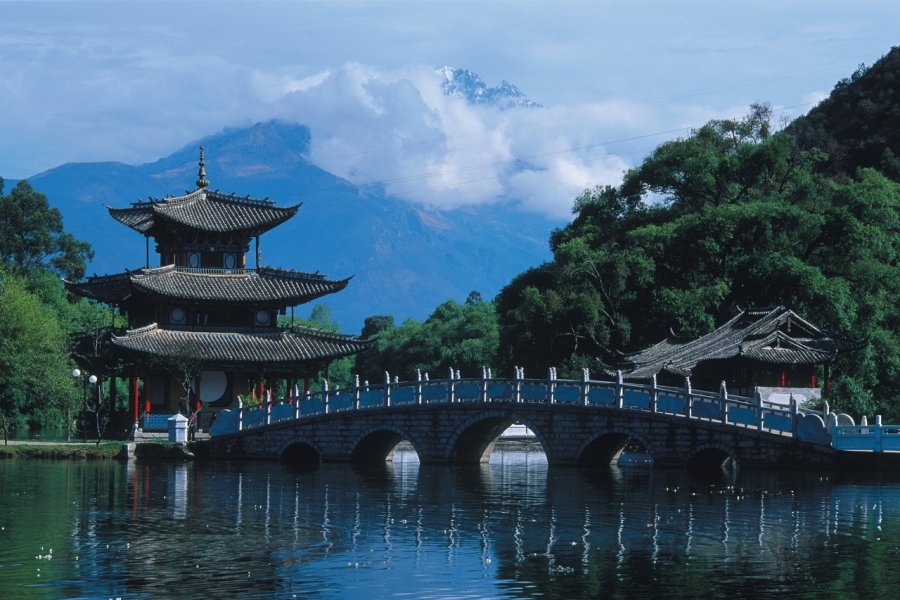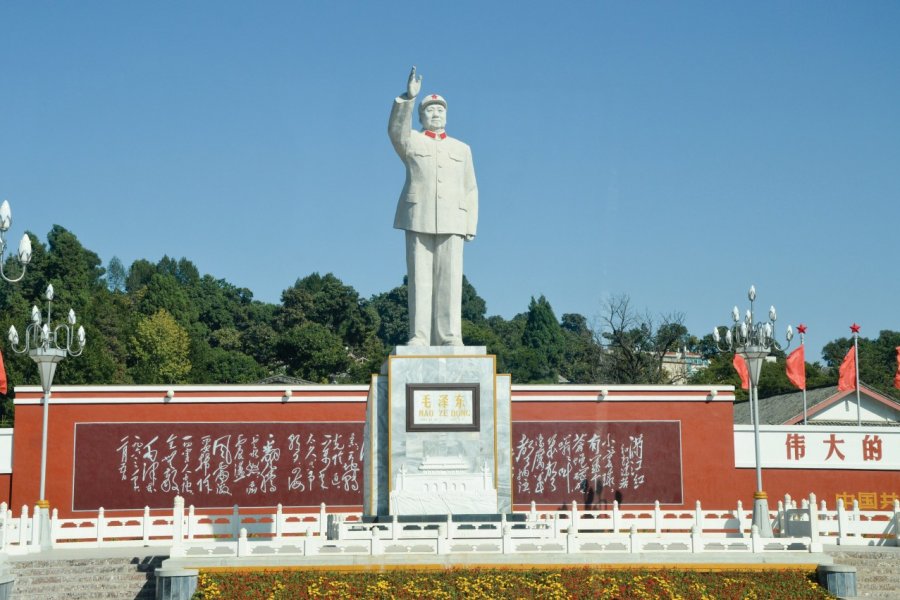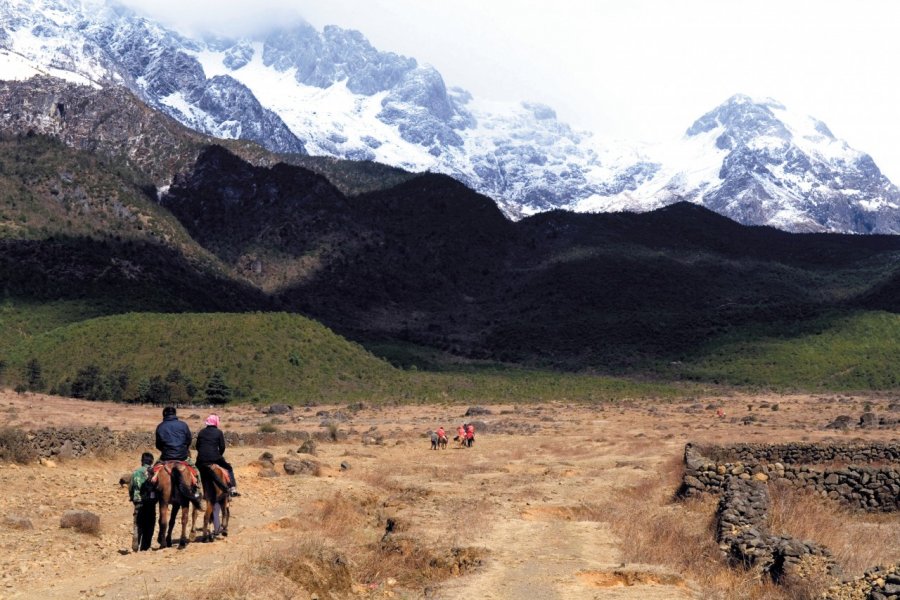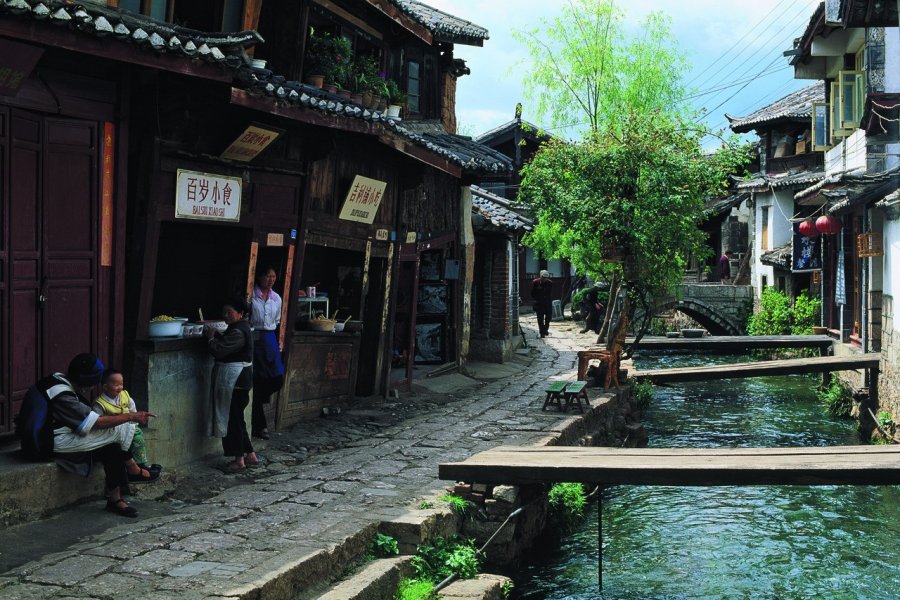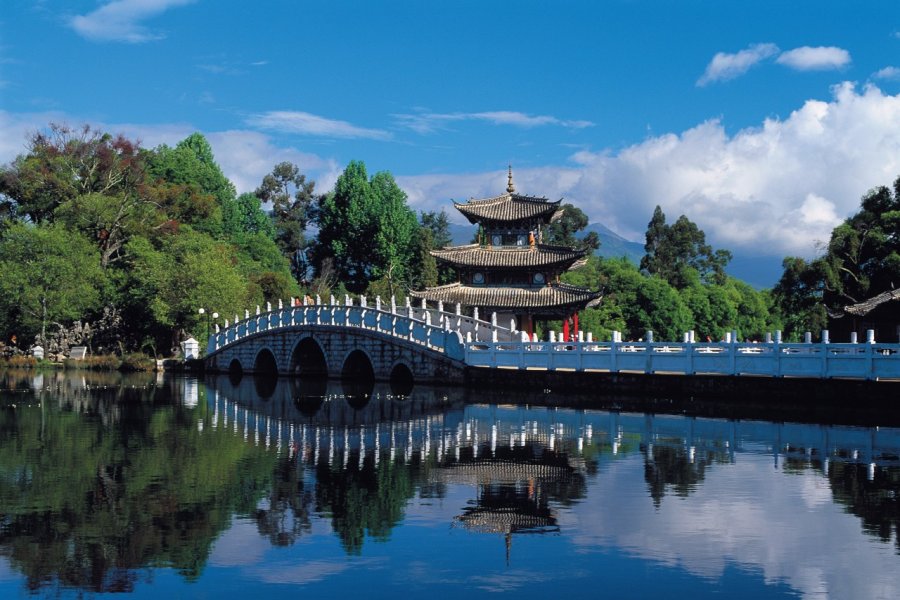Travel Guide Lijiang 丽江
Find an accommodation
Advertising
The small town of Lijiang is located on the northwest plateau of Yunnan bordering Tibet. The landscape is breathtaking: Lijiang is thus surrounded by green mountains, the eternal ice summits dominating the site. When weather is not in rain and fog, we have a beautiful view of the snow-covered monts of the Dragon of Jade (Yulong Xueshan), which culminate at 5,596 m, the Himalayan and Tibet. It is also in this region that the first mesander of the river Yangtse is located.The Lijiang prefecture used to dominate the principality of Mexiezhao, and the region guards a number of Buddhist palaces and temples from Ming and Qing times from its prestigious past. Lijiang's old town, named Dayan, took its present appearance 800 years back, under the Southern Song dynasty. It was built around streams from the source of the Black Dragon (Heilongtan), at the foot of the Lion Hill. These clear-wave channels always come in front of the doors. Uneven pavement alleys are lined with traditional houses, wooden structure and wall walls. Covered with a Cornu roof, they are generally spacious, with balconies that protect from the sun as rain. The square courtyard closed by the different bodies of buildings is often decorated with flowers and small trees. View of the surrounding hills, the medieval city reminds you of an immense stone stone, hence its name Dayan, which means "big coffin".The population of Lijiang is composed of just over 50% of ethnic minorities, the largest of whom are Naxi. Yi, Lisu, Pumi, Dai, Miao and Tibetans are also identified. The Naxi (or Nakhi) are descendants of Tibetan nomads. Ancient dongba writings written more than 1,000 years ago refer to Mount Kailash, Tibet. This unknown civilization in the West was described by Joseph Rock in The Ancient Nakhi Kingdom of Southwest China in 1947, and by the Russian writer Peter Goullart in his 1955 book Forgotten Kingdom. In 1913, Lijiang was still far from being a tourist destination, but the Austro-American geographer Joseph Rock came up for 28 years. He left Lijiang by bequeath his beautiful photos and passion for mountains and rivers to the West - without knowing that he would thus awaken the curiosity of millions of people.Lijiang is now divided into two distinct parts: the new and the old town. The new city looks like any interest-free bourgado from the rest of China. The old town is of course worth a visit, but there is no need to dwell on it too much. Listed as UNESCO's World Heritage Site since 1997 after being renovated following a heavy earthquake in 1996, Lijiang is now flooded with tourists. The Naxi, many of whom are forced to leave the old town, are trying to preserve their language and traditions, and tourists seeking authenticity and tranquility may be a little disappointed. However, the place remains magical and its visit is indispensable if you go to Yunnan.
What to visit Lijiang 丽江?
Advertising
Weather at the moment
Advertising
Organize your trip with our partners Lijiang 丽江
Transportation
Book your plane tickets
Car Rental
Boat rental
Accommodation & stays
Find a hotel
Holiday rental
Find your campsite
Tailor-made trip
Immersion travel
Services / On site
Activities & visits
Find a doctor
Lijiang 丽江 travel inspiration
Find unique Stay Offers with our Partners
Pictures and images Lijiang 丽江
Other destinations nearby Lijiang 丽江
100 km away
